![[Ötzi, the iceman, iceman, stone age, pictures, images frozen body, alps]](archaeologist.gif)
frozen fritz, Ötzi, the iceman, iceman, stone age, pictures, images, oetzi burial ceremony
Ötzi, the iceman, iceman, stone age, pictures, images oetzi, Ötzi![[Ötzi, the iceman, iceman, stone age, pictures, images frozen body, alps]](archaeologist.gif) frozen fritz, Ötzi, the iceman, iceman, stone age, pictures, images, oetzi burial ceremony |
| Home > Archaeology index > Ötzi - The Iceman from the Alps pictures images |
|
|||
Ötzi / Oetzi - The Iceman of the Alps pictures imagesOn Thursday, September 19, 1991, at about 1.30 p.m. on a sunny afternoon Erika and Helmut Simon, from Nuremberg in Germany, were enjoying a vacation half-walking and half-climbing through difficult icy and rock-strewn terrain high up on a mountain overlooking the Ötz valley in the Alpine borderlands between Austria and Italy. On their descent from a peak near Tisenjoch they strayed a little from
the recommended route in the hope of finding a short cut and, as they traversed a rock-strewn elevated plateau near a retreating mountain glacier
at some 3210 meters above sea level, they passed a gully filled with thawing ice and
melt-water within which they noticed something unusual. Further investigation showed this object
to be an actual human corpse.
On their descent from a peak near Tisenjoch they strayed a little from
the recommended route in the hope of finding a short cut and, as they traversed a rock-strewn elevated plateau near a retreating mountain glacier
at some 3210 meters above sea level, they passed a gully filled with thawing ice and
melt-water within which they noticed something unusual. Further investigation showed this object
to be an actual human corpse.
Much of these human remains lay under the ice and melt-water but the back of the head and upper back and shoulders were exposed - the Simons also noticed several pieces of rolled-up tree bark near the body and took a picture of what they now presumed to be the unfortunate victim of some sort of, quite recent, accident on the mountain before leaving to report their find. No more pictures were taken that day because their camera used rolls of photographic film and when they discovered the body their camera's roll of film was nearly used up. The following day two "officiating" Austrians, a policeman and a mountain rescue officer, showed up to try to recover the remains - with the aid of a pneumatic drill! Unfortunately the weather was markedly less kind than when the body was discovered and the pair worked semi-immersed in freezing waters and some damage was done to the left of the frozen ice mummy as it lay under the ice and the freezing cold water.
The remains were then taken to the Institute of Forensic Medicine in Innsbruck, Austria. Fatalities occur every year in the high alps due to such things as climbing accidents, exhaustion, adverse weather or sudden deaths. The bodies of such victims are often recovered shortly afterwards but they can also subsequently disappear into the snowy landscape. Although some six bodies had already been recovered from the high alps already in 1991 an archaeological expert was called in to give advice in this particular case because some of the artifacts discovered seemed to be potentially very ancient. This archaeological expertise arrived on the scene all of five days after the initial discovery and the Ötzi ice mummy was recognised as being of great antiquity. Steps were taken to better preserve the remains by controlling temperature and humidity conditions. International complications came into play as, although the body was discovered in a place where waters as they drained from this part of the Alps flowed towards Austria, its actual resting-place was confirmed, by a subsequent border survey of early October, to have been some 93 metres inside the Italian border. Agreements were reached between the relevant authorities allowing for the continued responsibility for the investigation of the corpse to lie with the Forensic Institute at Innsbruck. A dispute about "ownership" of Ötzi the Iceman, as the remains became known in an emerging world-wide fascination with this "cold case" of an ice mummy found on the Austrian-Italian frontier, continued for six years until, early in 1998, under armed guard, (because some Austrians had shown dis-satisfaction to see this relocation), Otzi and his belongings were transported from the Institute of Anatomy of the University of Innsbruck over the Brenner Pass to a new and purpose-built refrigerated resting place in a converted former bank building selected for its favorable location in the historical center of Bolzano - of an important town within Italy that was reasonably close to the actual discovery site: the conversion cost some 8,800,000 Euros.
The gully in which the body was found had helped to preserve it, in its frozen state, from the immense weight of snow which seems to have covered the site for most of the several millenia since Ötzi, ( pronounced Oot-zee, and often actually spelled Oetzi ), lost his life. Ötzi's remains must have been claimed by icy cold quite soon after his demise as even his internal organs were found to be intact - they were able for instance to actually analyse his stomach contents which included ibex meat and primitively cultivated "einkorn" grains. Over several years of subsequent investigation forensic findings relating to this frozen body in the Alps included the time of death as being some 5,300 years ago - in the late stone / early copper age! The deceased being a male of some 45 years of age with tattoos on his body and worn, but otherwise perfect, teeth and a probably quite troublesome infestation of intestinal whipworms. The deceased had come to a violent end - an arrowhead was found buried in the body and there was evidence of Ötzi having been heavily struck on the head perhaps with a blunt instrument or perhaps as the result of a fall. The madical examination held that either the arrow wound or the head trauma were sufficiently damaging as to cost Otzi his life. Based on the evidence of the several artifacts found together with the remains researchers now attribute a perhaps surprising degree of technological attainment to the Ötzi the Iceman and his late stone / early copper age colleagues. It was realised that those trying to recover the body had unwittingly trampled all over a hugely significant archaeological site and had even broken Ötzi's stone-age bow and the frame of his stone-age back pack, in trying to prize him from the ice. There is evidence of quite detailed attention to the preparation of clothing with which to dress against the cold:-
Traces of copper and arsenic were found in Ötzi's hair consistent with some exposure to fumes from copper smelting. There is also a flint blade knife with its scabbard (on right), and the tubular item in the centre is called a retoucheur.  This example of a retoucheur is an approximately 12 cm-long pencil-like tool for working with flint
was made from a piece of
lime branch which was shaped to a point at one end. At the pointed end an approximately 6 cm-long rod was driven
into the central canal, leaving a few millimetres protruding. The rod turned out to be the fire-hardened point of
a stag’s antler. This example of a retoucheur is an approximately 12 cm-long pencil-like tool for working with flint
was made from a piece of
lime branch which was shaped to a point at one end. At the pointed end an approximately 6 cm-long rod was driven
into the central canal, leaving a few millimetres protruding. The rod turned out to be the fire-hardened point of
a stag’s antler.To fashion tools of flint, a flint cobble would first be hammered with hard blows to produce flakes and crude blades. These were then precisely shaped by pressing against the edge of the workpiece with a retoucheur to remove small fragments. The same method is used to resharpen dull edges. When the end of the retoucheur became blunt with wear, it could be sharpened like a pencil.  As to the tattoos - one of several groups of vertical lines are located to the left and right of the spinal column.
Others are on the left
calf,
on the right instep and on the inner and outer ankle joint, two further lines cross the left wrist. A cross-shaped mark
appears on the back of the right knee and beside the left Achilles tendon.
As to the tattoos - one of several groups of vertical lines are located to the left and right of the spinal column.
Others are on the left
calf,
on the right instep and on the inner and outer ankle joint, two further lines cross the left wrist. A cross-shaped mark
appears on the back of the right knee and beside the left Achilles tendon.Later researchers considered that the tattoos may have been intended as therapeutic measures to hopefully combat arthritis rather than as decorative or religious symbols as, astonishingly, these tattooed areas seem to correspond to accepted skin acupuncture lines. Before Ötzi it was thought that this treatment had only originated two thousand years later in Asia. 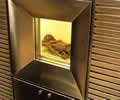 The remains of Ötzi the Iceman now lie in the Südtiroler Archeologiemuseum in Bozen / Bolzano in Italy's
South Tyrol
where they are stored in a nitrogen rich atmosphere under conditions of controlled temperature and humidity,
which are designed to guarantee a constant temperature of -6 ° C and a relative humidity of 98%,
for their preservation but can be
seen through a 40cm x 30cm viewing window by interested visitors. The remains of Ötzi the Iceman now lie in the Südtiroler Archeologiemuseum in Bozen / Bolzano in Italy's
South Tyrol
where they are stored in a nitrogen rich atmosphere under conditions of controlled temperature and humidity,
which are designed to guarantee a constant temperature of -6 ° C and a relative humidity of 98%,
for their preservation but can be
seen through a 40cm x 30cm viewing window by interested visitors.
The space devoted to the Iceman occupies most of the first floor of the museum and consists of a decontamination room, an examining room, and two adjoining identical refrigeration chambers with independent cooling systems. There has, seemingly, been some discussion as to whether Otzi should be allowed to have a "decent" burial and be allowed to be "laid to rest" away from the public gaze. The museum authorities consider, however, that they do try to treat his remains with respect and with scientific care - they also point out that after 5,300 years old they would not be able to bury him in accordance with the customs of his own people. Besides which science can hope to learn much from Otzi in his present situation. Recent advances in the study of DNA, for example, have led to the decoding of Otzi's entire DNA genome, in 2010, from which Science can hope to learn important lessons about the development of modern man's genetically related susceptibility to certain diseases.
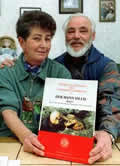 In 1994 the Italian authoritiies
offered a "symbolic" reward of 10 million lire (€5,200), to the Simons, (pictured left), for their part in Oetzi's discovery and recovery.
In 1994 the Italian authoritiies
offered a "symbolic" reward of 10 million lire (€5,200), to the Simons, (pictured left), for their part in Oetzi's discovery and recovery.
The Simons, however, turned this down. Possibly as a result of the on-going dispute the Simons were not invited to an high-profile celebration of the tenth anniversary of the Otzi discovery in 2001. They have also found themselves to be expected to pay their way into the Otzi Museum - just like everybody else. In November, 2003, the Simons were legally recognised by the Italian courts as the "finders" of the Iceman mummy and therefore entitled, under Italian law, to one quarter of Oetzi's "value". The Museum, meanwhile, maintained that it was a not-for-profit organisation, with the millions being paid annually by the hundreds of thousands of visitors as entrance fees to the Iceman exhibition being spent on the upkeep of the museum and allied research projects. Moreover Oetzi could not be "sold" like a great work of art might be passed from one owner to another! Bolzano is an inherently attractive town in the highly scenic Dolomite mountain region but the presence of Otzi in the town must contribute to its prosperity as tourism centre. Ironically Helmut Simon met his own end in the freezing cold of the high mountains. In mid-October 2004, he had, at age 67, still been pursuing his passion for mountain walking and had set out, alone, for what should have been a modest four-hour round trip in mountains in Austria's Salzburg province. Helmut Simon failed to return as expected - there were heavy snowfalls and the temperatures were close to freezing - his body was recovered some eight days later. He had apparently fallen some 100 metres from a mountain path and died instantly. In May, 2010, after an almost twenty-year long dispute, the Simon family was awarded 175,00 euros (including legal fees), in recognition of the Erika and Helmut Simons' role in the discovery and recovery of Ötzi.
 2011 is the 20th anniversary year of the Iceman discovery.
2011 is the 20th anniversary year of the Iceman discovery. 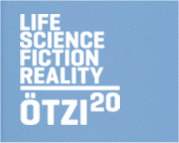 A major series of events is planned for an extensive Ötzi˛° exhibition is to be mounted at
the South Tyrol Archaeology Museum in Bolzano during 2011. A major series of events is planned for an extensive Ötzi˛° exhibition is to be mounted at
the South Tyrol Archaeology Museum in Bolzano during 2011.
|
|
||||||||||||||||||||||||
![]()
"...man is a bundle of relations, a knot of roots,
whose flower and fruitage is the world..."
Ralph Waldo Emerson
![]()
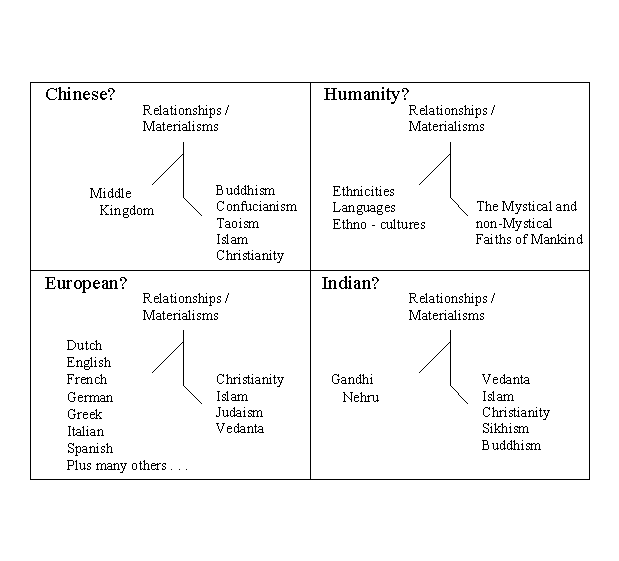
It seems highly likely that such Human-innate
"bundles of relations and knots of roots"
give rise to the "World" of Human Societies!!!
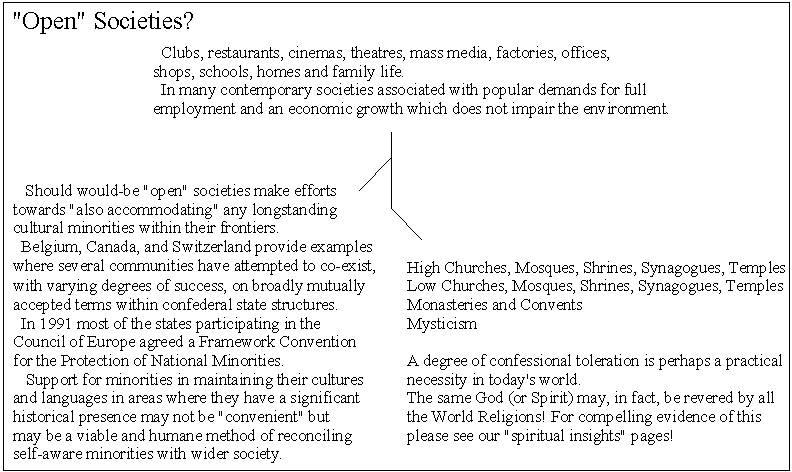
|
Return to start of
Ötzi - The Iceman from the Alps pictures images page